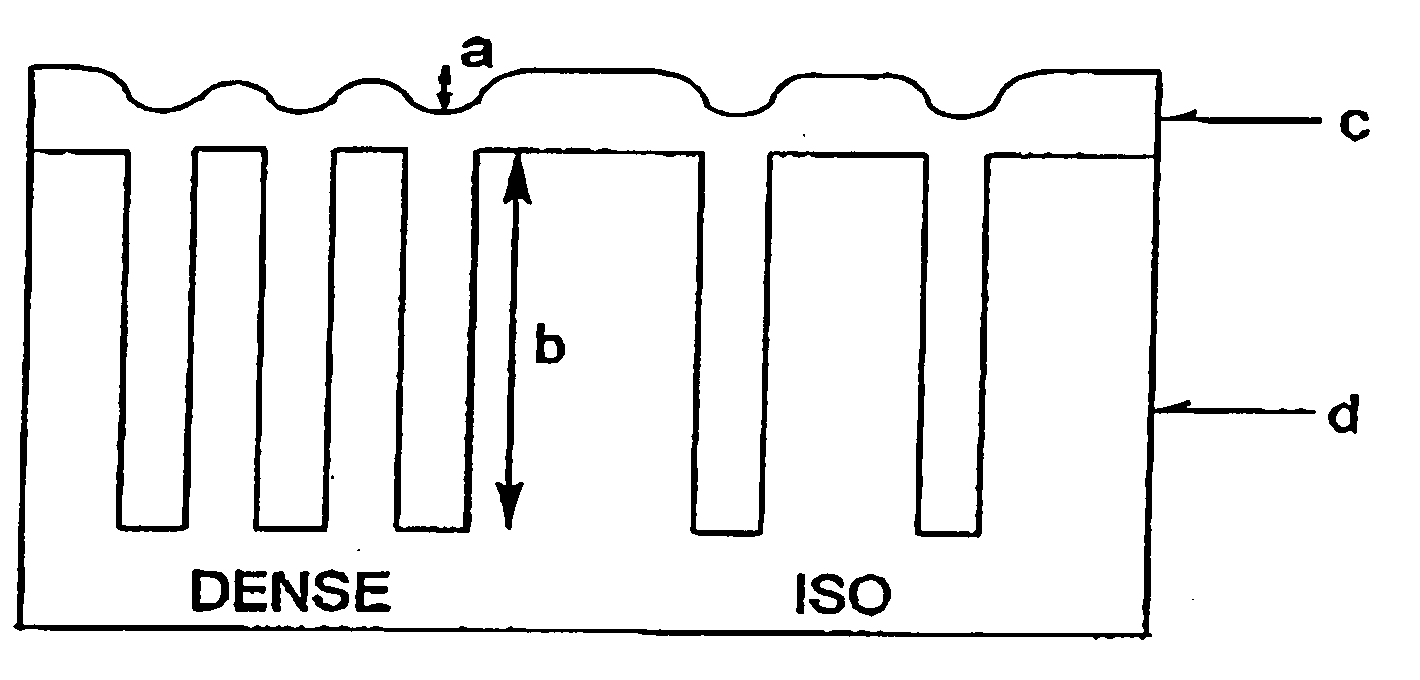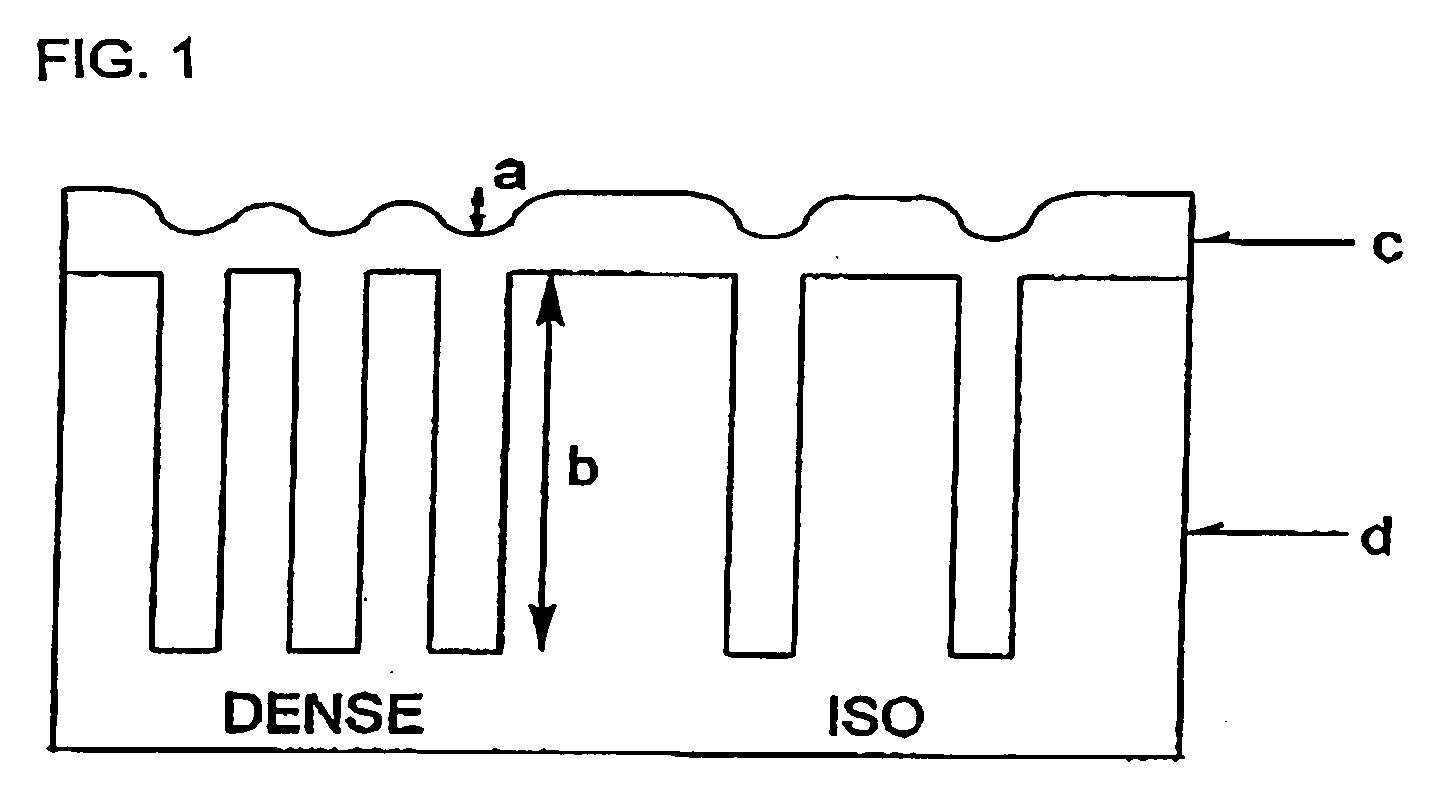Resist Underlayer Coating Forming Composition for Forming Photo-Crosslinking Cured Resist Underlayer Coating
a technology of resist and underlayer coating, applied in the direction of photosensitive materials, instruments, photomechanical equipment, etc., can solve the problems of difficult to apply organic materials for anti-reflective coating on a substrate having a high aspect ratio, etc., to achieve uniform film thickness, good photoresist pattern, and high dry etching rate
- Summary
- Abstract
- Description
- Claims
- Application Information
AI Technical Summary
Benefits of technology
Problems solved by technology
Method used
Image
Examples
example 1
[0100]In 25.87 g of propylene glycol monomethyl ether, 5 g of a photopolymerization compound: pentaerythritol tetramethacrylate (manufactured by Sigma-Aldrich Japan K.K., trade name: FW352), 0.25 g of a photopolymerization initiator triphenylsulfonium trifluoromethane sulfonate (manufactured by Midori Kagaku Co., Ltd., trade name: TPS105) and 0.05 g of a surfactant (manufactured by Dainippon Ink and Chemicals Incorporated, trade name; Megafac R-30) were added to prepare a solution of 17 mass % (solid content concentration). Then, the solution was filtered through a micro filter made of polyethylene having a pore size of 0.2 μm to prepare a solution of an underlayer coating forming composition.
example 2
[0101]In 25.87 g of propylene glycol monomethyl ether, 5 g of a photopolymerization compound: bis(4-glycidyloxyphenyl)methane (manufactured by Sigma-Aldrich Japan K.K., trade name: FW312), 0.25 g of a photopolymerization initiator: triphenylsulfonium trifluoromethane sulfonate (manufactured by Midori Kagaku Co., Ltd., trade name: TPS105) and 0.05 g of a surfactant (manufactured by Dainippon Ink and Chemicals Incorporated, trade name: Megafac R-30) were added to prepare a solution of 17 mass % (solid content concentration). Then, the solution was filtered through a micro filter made of polyethylene having a pore size of 0.2 μm to prepare a solution of an underlayer coating forming composition.
example 3
[0102]In 27.10 g of propylene glycol monomethyl ether, 5 g of a photopolymerization compound: bisphenol-A-propoxylate diglycidyl ester (manufactured by Sigma-Aldrich Japan K.K., trade name: FW457), 0.50 g of a photopolymerization initiator: triphenylsulfonium trifluoromethane sulfonate (manufactured by Midori Kagaku Co., Ltd., trade name: TPS105) and 0.05 g of a surfactant (manufactured by Dainippon Ink and Chemicals Incorporated, trade name: Megafac R-30) were added to prepare a solution of 17 mass % (solid content concentration). Then, the solution was filtered through a micro filter made of polyethylene having a pore size of 0.2 μm to prepare a solution of an underlayer coating forming composition.
PUM
| Property | Measurement | Unit |
|---|---|---|
| aspect ratio | aaaaa | aaaaa |
| wavelength | aaaaa | aaaaa |
| temperature | aaaaa | aaaaa |
Abstract
Description
Claims
Application Information
 Login to View More
Login to View More - R&D
- Intellectual Property
- Life Sciences
- Materials
- Tech Scout
- Unparalleled Data Quality
- Higher Quality Content
- 60% Fewer Hallucinations
Browse by: Latest US Patents, China's latest patents, Technical Efficacy Thesaurus, Application Domain, Technology Topic, Popular Technical Reports.
© 2025 PatSnap. All rights reserved.Legal|Privacy policy|Modern Slavery Act Transparency Statement|Sitemap|About US| Contact US: help@patsnap.com



